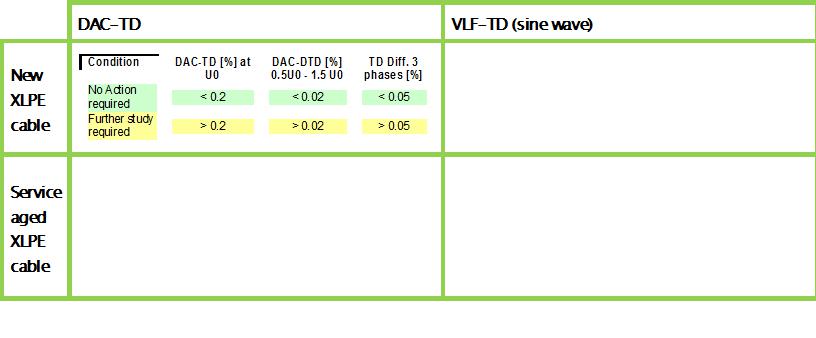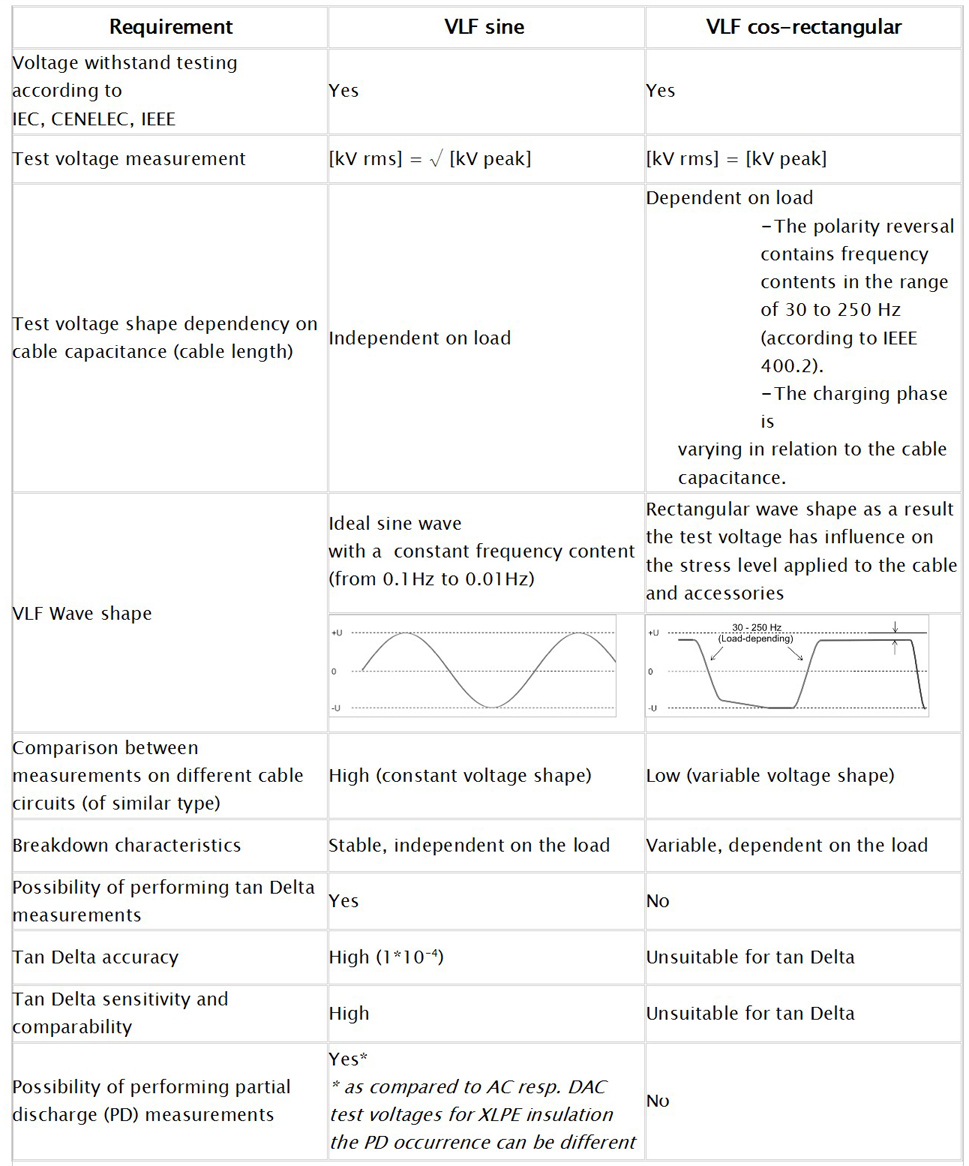
New technologies of acceptance tests and cable diagnostic as a basis for advanced asset management of extensive cable networks.
Basic aspects of tan Delta measurements at damped AC (DAC) and very low frequency sinus wave (VLF) test voltages
Damped AC (DAC) and very low frequency sine wave (VLF) test voltages are worldwide accepted for testing and diagnosis of distribution power networks. Both methods are used for after-laying, maintenance and diagnostic testing of medium voltage cable circuits. Both voltages can be combined with tan Delta measurements which has typical properties in relation to the voltage frequency.
Frequency dependency of the loss-factor tan Delta:
A dielectric material has an arrangement of electric charge carriers that can be displaced by an electric field. The charges become polarized to compensate for the electric field. As a result insulation materials have several dielectric polarization effects that contribute to its overall permittivity and the dielectric losses. Typical defects related to common types of dielectric losses are:
Insulation ageing represented by dipole losses (detectable with tan Delta measurement above 10 Hz)
This type of polarization results from permanent dipoles. These dipoles do not get polarized further (the distance between the charges remains constant), but only rotate when influenced by an electric field. Dipolar polarization is still a quite fast effect, which can follow up to high frequencies.
Water treeing represented by conductive losses (detectable with tan Delta measurement below 1 Hz)
Many dielectrics possess a conductivity due to motion of charges and such conductivity is usually expressed by a volume conductivity. The motion of charges in the dielectric gives rise to the conduction current and additionally polarizes the dielectric. The conductivity may therefore be visualized as contributing to the dielectric loss.
Interface problems between materials represented by interface losses (detectable with tan Delta at 50/60 Hz power frequencies)
This is the dominant process in insulating materials composed of multiple dielectric materials. Due to the mismatch in permittivity times resistivity of both materials, positive and negative charges are deposited on the interfaces when an electric field is applied and also form some kind of dipoles.
Localized high intensity discharging defects (detectable with than Delta above 10 Hz)
Partial discharges with high intensity and large amplitude cause an increase in the loss factor. The partial discharges start at a certain inception voltage (PDIV). At this voltage level, a sudden increase of the tan Delta occurs. Above this inception voltage the dielectric losses start to grow rapidly.

Types of typical losses in relation to the voltage frequency. Dipole losses, interface losses and partial discharge losses are dominant in the frequency range of the DAC testing and the conductive losses are dominant in the frequency range of VLF sine testing
Tan Delta evaluation criteria with DAC and VLF sine wave:
With DAC testing including tan Delta measurement (DAC-TD) as well for VLF sine wave testing including tan Delta measurement (VLF-TD) on different test voltage levels the outcomes of the monitored tests with both voltage shapes needs to be further analyzed. General guidelines with boundary values can be applied to obtain a cable condition assessment.

Differences between VLF sine and VLF cos-rectangular voltages

Due to knowledge and experience and technically advanced products we improve working
environment of our customers and raise the quality of services provided by them to the world standard.

